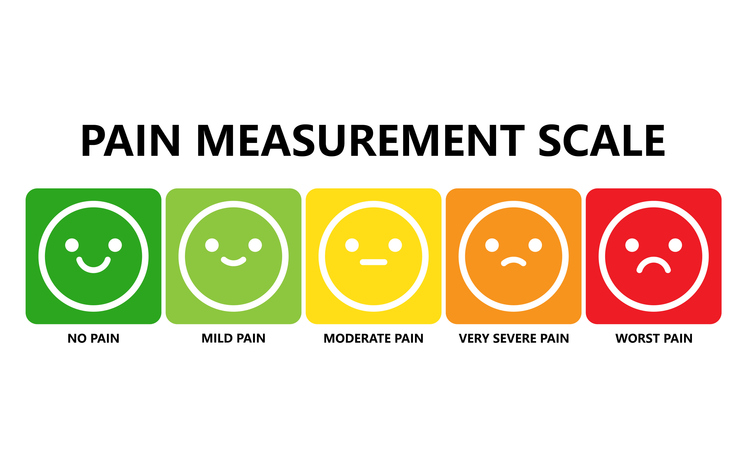Pain
Neuropathic Pain Symptom Inventory (NPSI)

Development of the Neuropathic Pain Symptom Inventory
French and Belgian specialists developed the Neuropathic Pain Symptom Inventory (NPSI) to assess the management of neuropathic pain syndromes. The NPSI is the only scale approved for evaluating both peripheral and central neuropathic pain. It is used to aid in the diagnosis of certain subcategories of neuropathic pain syndromes and to help determine beneficial treatments.
Early in its development, the NPSI included 18 symptom descriptors and four neuropathic pain dimensions. The final version includes 10 symptom descriptors, with two items that evaluate paroxysmal spontaneous pain.
The Neuropathic Pain Symptom Inventory
The NPSI is used to evaluate the average pain intensity experienced in the past 24 hours. The scale ranges from zero to 10, with zero being no pain at all and 10 being the worst imaginable pain. Sections of the scale include the following:
Severity of spontaneous pain
- Does the pain feel like burning?
- Does the pain feel like squeezing?
- Does the pain feel like pressure?
- During the past 24 hours, has the pain been present: permanently, 8-12 hours, 4-7 hours, 1-3 hours, less than 1 hour?
Severity of the painful attacks
- Does the pain feel like electric shocks?
- Does the pain feel like stabbing?
- In the past 24 hours, how many painful attacks have occurred? More than 20, 11-20, 6-10, 1-5, or none.
Severity of provoked pains
- Is the pain provoked or increased by brushing on the painful area?
- Is the pain provoked or increased by pressure on the painful area?
- Is the pain provoked or increased by contact with something cold on the painful area?
Severity of abnormal sensations
- Do you feel pins and needles?
- Do you feel tingling?
The total score of all ten descriptors are added to find the total pain intensity. Each descriptor may be observed separately to evaluate different types of pain in isolation.
Additional sources: Semantic Scholar and Scientific Electronic Library Online


















